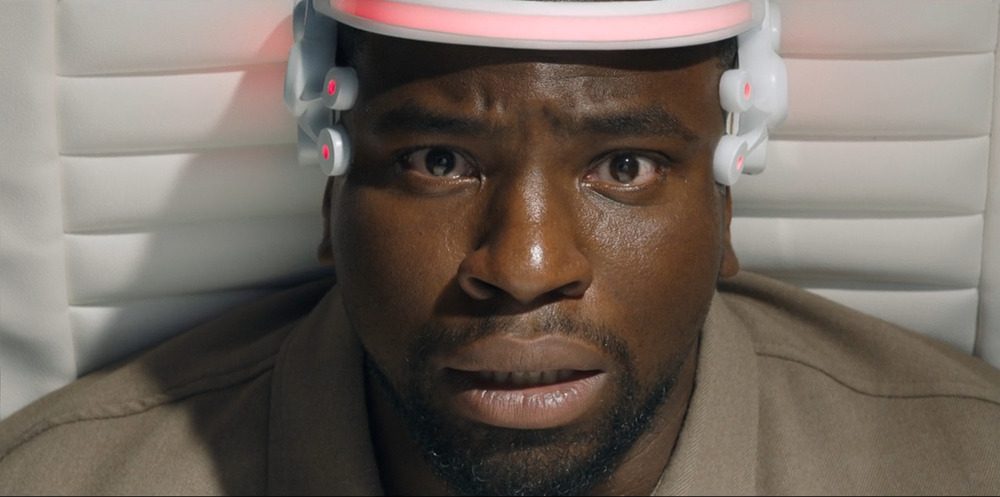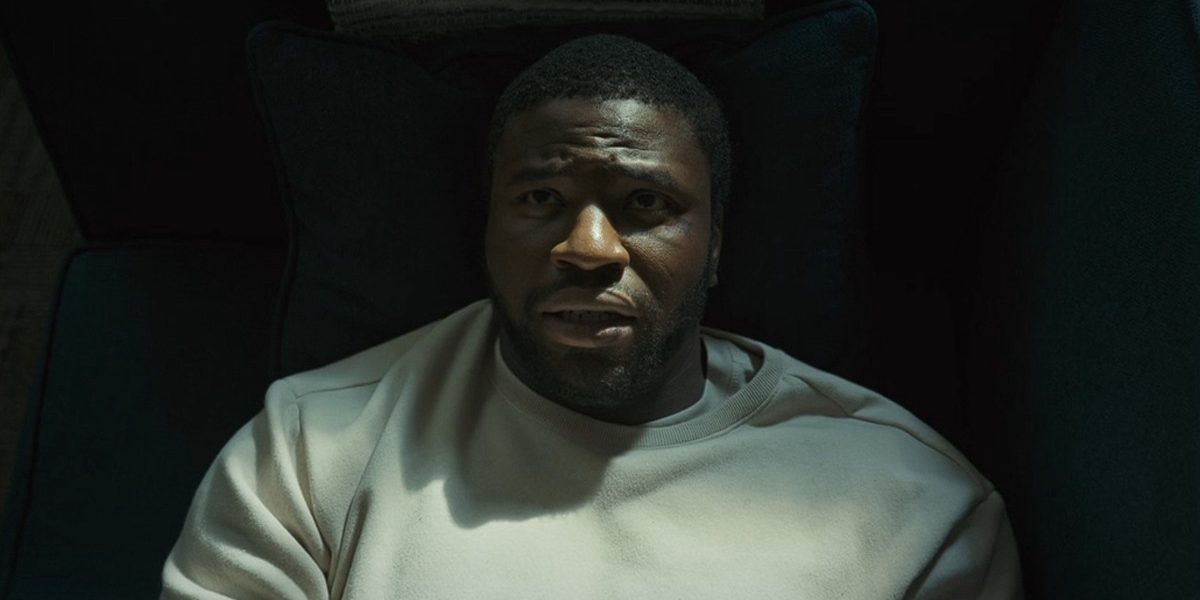Tubi’s ‘Demascus‘ is a sci-fi comedy series that follows the titular character’s life, who is trying to reconnect with himself on a deeper level. The narrative primarily focuses on Demascus Haynes, a 33-year-old graphic designer working for a government organization in Washington, D.C. He has been going through a lot in his life and has decided to go to therapy. He mainly joins therapy because he wants to rediscover himself and finally understand who he is beneath it all. To find the answers, he takes the help of D.I.R.T., an experimental digital immersive therapy, that might help him navigate alternate realities of his life and make him understand what his life could look like. As he begins his journey, he quickly realizes that this technique shows him infinite possibilities for his future and strips away pieces of his present.
Despite realizing he is losing his grasp on what’s real and what’s not, Demascus continues using the technology mentioned above. Apart from that, his therapist, Dr. Bonnetville, tells him to use Tethur, a device where he can share his feelings and talk about his fears. This device is linked to his therapist, and whatever he shares there, the therapist will be able to see. It will give the therapist the data she is looking for, making her work easier. Even though the series mainly explores Demascus’s self-discovery, it shows how technology can blur the line between reality and fiction. Including this aspect makes the story unique and sparks curiosity about whether it draws inspiration from real-life events or today’s cutting-edge technology.
D.I.R.T. Takes Inspiration From Real-Life Technique Used For Treating Mental Health
‘Demascus‘ is not based on a true story; the show is a creative vision brought to life by Tearrance Arvelle Chisholm. However, one of the show’s key elements, D.I.R.T., takes inspiration from a real-life experimental therapy that helps treat mental health issues. Known as Virtual Reality Therapy (VRT), virtual reality technology assists mental health patients in their treatment by using interactive, simulated environments for therapeutic purposes. In ‘Demascus,‘ the titular character wears a gadget around his head that takes him into an alternate reality and shows him how his life could unfold differently, offering him glimpses of his choices and the paths he never took.

Medical professionals often use Virtual Reality Therapy as a form of exposure therapy. It is a technique where patients are able to confront their phobias or stimuli in a virtual environment. It not only assists them in being confident but also in reducing anxiety and improving their ability to cope with real-world problems. For instance, if the thought of going to a supermarket causes anxiety, a therapist and patient can engage in role-play through VRT, which will help the therapist understand what disturbs the patient and how the medical professional can help the person gain confidence. The experience feels real, but is guided by a therapist; it allows people to have deeper emotional processing and can accelerate healing compared to traditional therapy alone.
This technique is turning out to be useful and has already shown good results, especially in treating Post Traumatic Stress Disorder (PTSD). Research indicates that virtual reality therapy achieves a success rate between 66% and 90%, highlighting its promising potential as a therapeutic approach. Even after some resemblance, D.I.R.T. is nothing like real virtual reality therapy. In the series, the depiction leans more toward a sci-fi interpretation, using the technology to explore alternate realities rather than focusing on healing trauma. Professionals design real VRT to help patients process complex emotions in a safe environment. The distinction between the two is really significant because while the fictional portrayal is exciting, the true power of virtual reality therapy lies in its precision and benefits.
Tethur is a Fictional Device Used To Track Patients’ Progress
When it comes to technology, ‘Demascus‘ not only shows the D.I.R.T. technology as one of the tools that the therapist uses to guide the main character through mental health struggles. The series also shows another device called ‘Tethur,‘ which allows Demascus to share his feelings and what he is going through. As soon as he shares the information on Tethur, his therapist can access that information and make her notes so that she can help him. In reality, there is no device called Tethur; it is the makers’ creation. On the other hand, viewers shouldn’t confuse Tethur with Tether, a completely different blockchain-enabled platform focusing on digital currency transactions. Although the names are similar, the two have no connection.

While there’s no device similar to Tethur, there are several platforms that allow patients to share their notes and what they are feeling with the therapists. Platforms such as SimplePractice, TheraNest, and TherapyNotes provide easy and secure ways for patients to communicate with their therapists, track their progress, and receive feedback. These programs help medical professionals to know more about their clients and also help them understand how they can tailor treatment plans to suit each patient’s unique needs and challenges. Showing these kinds of technologies in ‘Demascus,‘ the show adds a layer of realism that resonates with today’s evolving mental health practices. It reflects how therapists rely on digital tools to treat their patients, going way beyond the traditional sessions. This approach makes the story more relatable and highlights the growing role of technology in improving mental health care. Showing these elements helps bridge the gap between fiction and real-world therapy, making the narrative feel grounded and relevant.
Read More: Demascus Ending Explained: Did Demascus Return to His Primary Reality?


